Great choice! Your favorites are temporarily saved for this session. Sign in to save them permanently, access them on any device, and receive relevant alerts.
- Sailboat Guide

Pearson 31-2
Pearson 31-2 is a 30 ′ 8 ″ / 9.4 m monohull sailboat designed by William Shaw and built by Pearson Yachts between 1987 and 1991.

- 2 / 21 Orange Park, FL, US 1988 Pearson 31-2 $29,500 USD View
- 3 / 21 Orange Park, FL, US 1988 Pearson 31-2 $29,500 USD View
- 4 / 21 Orange Park, FL, US 1988 Pearson 31-2 $29,500 USD View
- 5 / 21 Orange Park, FL, US 1988 Pearson 31-2 $29,500 USD View
- 6 / 21 Orange Park, FL, US 1988 Pearson 31-2 $29,500 USD View
- 7 / 21 Orange Park, FL, US 1988 Pearson 31-2 $29,500 USD View
- 8 / 21 Orange Park, FL, US 1988 Pearson 31-2 $29,500 USD View
- 9 / 21 Orange Park, FL, US 1988 Pearson 31-2 $29,500 USD View
- 10 / 21 Orange Park, FL, US 1988 Pearson 31-2 $29,500 USD View
- 11 / 21 Orange Park, FL, US 1988 Pearson 31-2 $29,500 USD View
- 12 / 21 Orange Park, FL, US 1988 Pearson 31-2 $29,500 USD View
- 13 / 21 Orange Park, FL, US 1988 Pearson 31-2 $29,500 USD View
- 14 / 21 Orange Park, FL, US 1988 Pearson 31-2 $29,500 USD View
- 15 / 21 Orange Park, FL, US 1988 Pearson 31-2 $29,500 USD View
- 16 / 21 Orange Park, FL, US 1988 Pearson 31-2 $29,500 USD View
- 17 / 21 Orange Park, FL, US 1988 Pearson 31-2 $29,500 USD View
- 18 / 21 Orange Park, FL, US 1988 Pearson 31-2 $29,500 USD View
- 19 / 21 Orange Park, FL, US 1988 Pearson 31-2 $29,500 USD View
- 20 / 21 Orange Park, FL, US 1988 Pearson 31-2 $29,500 USD View
- 21 / 21 Orange Park, FL, US 1988 Pearson 31-2 $29,500 USD View
Rig and Sails
Auxilary power, accomodations, calculations.
The theoretical maximum speed that a displacement hull can move efficiently through the water is determined by it's waterline length and displacement. It may be unable to reach this speed if the boat is underpowered or heavily loaded, though it may exceed this speed given enough power. Read more.
Classic hull speed formula:
Hull Speed = 1.34 x √LWL
Max Speed/Length ratio = 8.26 ÷ Displacement/Length ratio .311 Hull Speed = Max Speed/Length ratio x √LWL
Sail Area / Displacement Ratio
A measure of the power of the sails relative to the weight of the boat. The higher the number, the higher the performance, but the harder the boat will be to handle. This ratio is a "non-dimensional" value that facilitates comparisons between boats of different types and sizes. Read more.
SA/D = SA ÷ (D ÷ 64) 2/3
- SA : Sail area in square feet, derived by adding the mainsail area to 100% of the foretriangle area (the lateral area above the deck between the mast and the forestay).
- D : Displacement in pounds.
Ballast / Displacement Ratio
A measure of the stability of a boat's hull that suggests how well a monohull will stand up to its sails. The ballast displacement ratio indicates how much of the weight of a boat is placed for maximum stability against capsizing and is an indicator of stiffness and resistance to capsize.
Ballast / Displacement * 100
Displacement / Length Ratio
A measure of the weight of the boat relative to it's length at the waterline. The higher a boat’s D/L ratio, the more easily it will carry a load and the more comfortable its motion will be. The lower a boat's ratio is, the less power it takes to drive the boat to its nominal hull speed or beyond. Read more.
D/L = (D ÷ 2240) ÷ (0.01 x LWL)³
- D: Displacement of the boat in pounds.
- LWL: Waterline length in feet
Comfort Ratio
This ratio assess how quickly and abruptly a boat’s hull reacts to waves in a significant seaway, these being the elements of a boat’s motion most likely to cause seasickness. Read more.
Comfort ratio = D ÷ (.65 x (.7 LWL + .3 LOA) x Beam 1.33 )
- D: Displacement of the boat in pounds
- LOA: Length overall in feet
- Beam: Width of boat at the widest point in feet
Capsize Screening Formula
This formula attempts to indicate whether a given boat might be too wide and light to readily right itself after being overturned in extreme conditions. Read more.
CSV = Beam ÷ ³√(D / 64)
The second PEARSON 31, (here designated as PEARSON 31-2), and not to be confused with an earlier version(1977) also designed by William Shaw. A shoal draft, wing keel was also available. (draft: 3.9’; disp: 10200 lbs.) Re-introduced in 1996 during a short lived revival of the Pearson brand. (Cal-Pearson Corp.)
Embed this page on your own website by copying and pasting this code.

- About Sailboat Guide
©2024 Sea Time Tech, LLC
This site is protected by reCAPTCHA and the Google Privacy Policy and Terms of Service apply.
Pearson Yachts Portal
Pearson sailboat table.

Table of All Models by Pearson Yachts
All sailboat models.
Listed by model name - click header field to sort by column.
Key to Sailboat Table
- Model: Pearson model name and link to line drawing.
- Type: Boat and Rig Attributes. All types are Bermuda rigged sloop, single mast with fore-and-aft sails, unless otherwise specified by Cat, Ketch, or Yawl.
- LOA: Length Over All, the maximum length of the hull, in feet, from stem to stern measuring parallel to the waterline. This does not include projections of pulpits or spars.
- Draft: Deepest extent of hull, typically bottom distance from waterline to bottom of keel.
- DISP: Displacement, the vessel's weight in pounds, calculated from the volume of water displaced by it.
- SA/D: The sail area to displacement ratio is a bench-mark to evaluate light air performance as well as heavy air conditions.
- Production: Approximate years and number produced.
- Designer: Yacht designer
- Links: Web-Page references. External sites open in new tab or window.
Specifications are approximate from Pearson Yachts.
Key to Designers
- Shaw – William H. Shaw joined Pearson Yachts in 1964 as Chief Architect, eventually running the entire Pearson Yachts Division of Grumman. During his tenure, he and his team designed over 50 different sail and power boats. Bill Shaw
- Alberg – Carl Alberg's successful career as a designer can be linked back to his partnership with Pearson Yachts and early fiberglass yacht construction. Carl Alberg
- Tripp – During the 1960s, William H. Tripp Jr. was one of America’s most successful yacht designers. Bill Tripp
- Rhodes – Philip L. Rhodes was a naval architect known for his diverse yacht designs. Philip Rhodes | Philip Rhodes Vanguard
- Tritt – Bill Tritt is a yacht builder with a keen interest in fiberglass as a material to use in boats and cars. Bill Tritt
- Alden – John G. Alden was an American naval architect and the founder of Alden Designs. John Alden
Fast Boats in Their Time
Click to enlarge
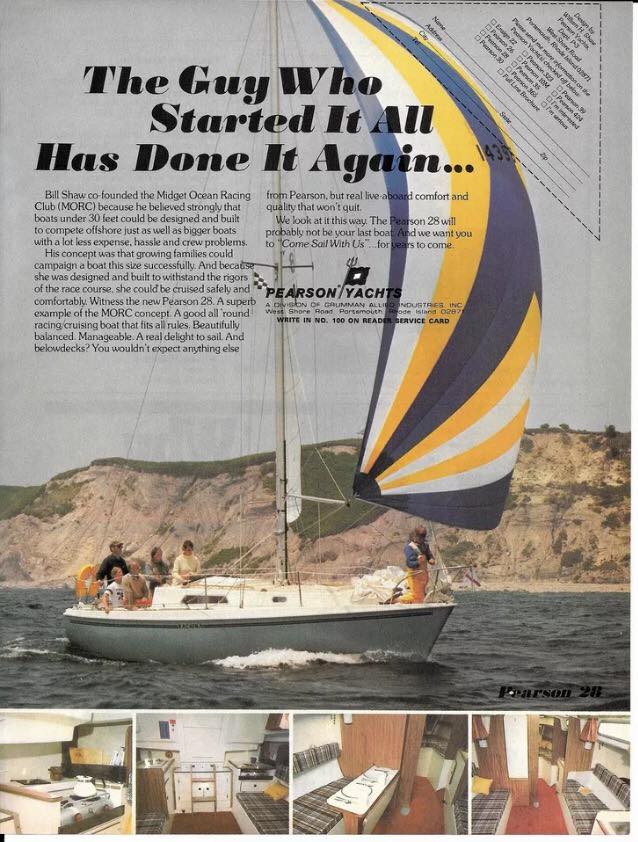
The guy who started it all has done it again...
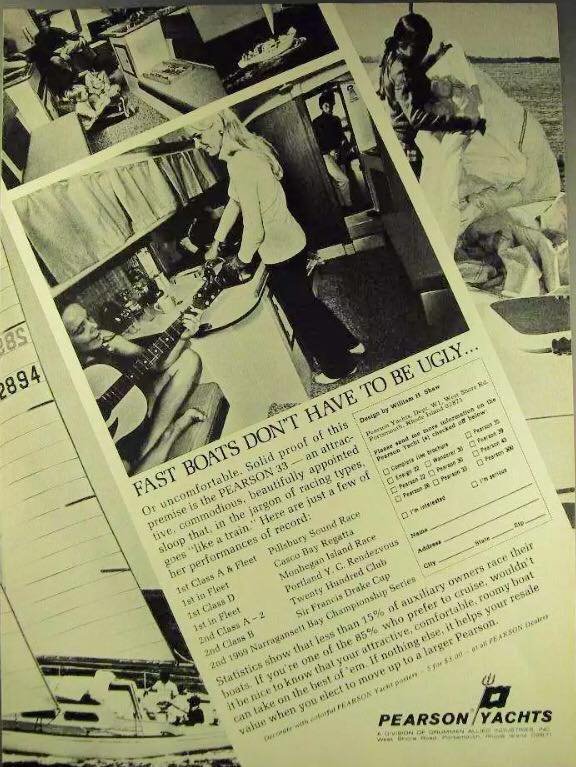
Fast boats don't have to be ugly...

× You are using an outdated browser. Please upgrade your browser to improve your experience.
We Ship Worldwide! | FREE SHIPPING! for US Continental orders over $99. Click for details.

Shopping Cart
Your cart is currently empty..
FREE SHIPPING! for US Continental orders over $99 click for details
Pearson 31-2 - Sailboat Data, Parts & Rigging

Sailboat data, rig dimensions and recommended sail areas for Pearson 31-2 sailboat. Tech info about rigging, halyards, sheets, mainsail covers and more.
Sailboat Data directory for over 8,000 sailboat designs and manufacturers. Direct access to halyards lengths, recommended sail areas, mainsail cover styles, standing rigging fittings, and lots more for all cruising and racing sailboats.
MAURIPRO Sailing offers a full range of sailboat and sailing information to help you find the correct sailboat part, one that properly would fit your sailboat and sailing style. Our sailor's and sailboat owner support team are ready to talk with you about your specific sailing needs, coming regatta, or next sailing adventure.
From all at MAURIPRO, let's Go Sailing!
Copyright © 2024 MAURIPRO Sailing LLC.
PEARSON 31-2 Detailed Review

If you are a boat enthusiast looking to get more information on specs, built, make, etc. of different boats, then here is a complete review of PEARSON 31-2. Built by Pearson Yachts and designed by William Shaw, the boat was first built in 1987. It has a hull type of Fin w/spade rudder and LOA is 9.35. Its sail area/displacement ratio 17.05. Its auxiliary power tank, manufactured by Yanmar, runs on Diesel.
PEARSON 31-2 has retained its value as a result of superior building, a solid reputation, and a devoted owner base. Read on to find out more about PEARSON 31-2 and decide if it is a fit for your boating needs.
Boat Information
Boat specifications, sail boat calculation, rig and sail specs, auxillary power tank, accomodations, contributions, who designed the pearson 31-2.
PEARSON 31-2 was designed by William Shaw.
Who builds PEARSON 31-2?
PEARSON 31-2 is built by Pearson Yachts.
When was PEARSON 31-2 first built?
PEARSON 31-2 was first built in 1987.
How long is PEARSON 31-2?
PEARSON 31-2 is 7.75 m in length.
What is mast height on PEARSON 31-2?
PEARSON 31-2 has a mast height of 11.22 m.
Member Boats at HarborMoor
- New Sailboats
- Sailboats 21-30ft
- Sailboats 31-35ft
- Sailboats 36-40ft
- Sailboats Over 40ft
- Sailboats Under 21feet
- used_sailboats
- Apps and Computer Programs
- Communications
- Fishfinders
- Handheld Electronics
- Plotters MFDS Rradar
- Wind, Speed & Depth Instruments
- Anchoring Mooring
- Running Rigging
- Sails Canvas
- Standing Rigging
- Diesel Engines
- Off Grid Energy
- Cleaning Waxing
- DIY Projects
- Repair, Tools & Materials
- Spare Parts
- Tools & Gadgets
- Cabin Comfort
- Ventilation
- Footwear Apparel
- Foul Weather Gear
- Mailport & PS Advisor
- Inside Practical Sailor Blog
- Activate My Web Access
- Reset Password
- Pay My Bill
- Customer Service

- Free Newsletter
- Give a Gift

How to Sell Your Boat

Cal 2-46: A Venerable Lapworth Design Brought Up to Date

Rhumb Lines: Show Highlights from Annapolis

Open Transom Pros and Cons

Leaping Into Lithium

The Importance of Sea State in Weather Planning

Do-it-yourself Electrical System Survey and Inspection

Install a Standalone Sounder Without Drilling

Rethinking MOB Prevention


Top-notch Wind Indicators

The Everlasting Multihull Trampoline

In Search of the Snag-free Clew

What’s Involved in Setting Up a Lithium Battery System?

Reducing Engine Room Noise

Breaking Point: What Can Go Wrong With Your Yanmar?

Mildew-resistant Caulks for Boats

Can We Trust Plastic Boat Parts?

Repairing Molded Plastics

Mailport: Marine plywood, fuel additives, through bolt options, winch handle holders

The Day Sailor’s First-Aid Kit

Choosing and Securing Seat Cushions

Cockpit Drains on Race Boats

Rhumb Lines: Livin’ the Wharf Rat Life

Resurrecting Slippery Boat Shoes

Shoe Goo’s Gift to Sailors

Tricks and Tips to Forming Do-it-yourself Rigging Terminals

Marine Toilet Maintenance Tips

Learning to Live with Plastic Boat Bits

The Ultimate Guide to Caring for Clear Plastic
- Sailboat Reviews
- Pearson 32 Boat Review
Launched in 1979, the Bill Shaw-designed Pearson 32 still shines among the club racers and coastal cruisers. Its draw is that it more than meets the needs of a cruising couple without sacrificing performance
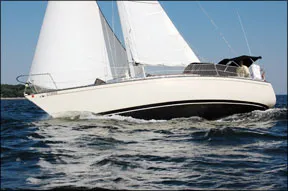
The Pearson 32 was launched in 1979, 20 years after the first Carl Alberg-designed Pearson Triton captured market interest at the New York Boat Show and promoted sailing as a middle-income activity. In the early 1960s, the company’s principals, Clint and Everett Pearson, Alberg, and marketing strategist Tom Potter developed a reputation for functional, well built, cost-effective production sailboats that had widespread mass appeal. By the end of the first decade of production, the company had evolved into the dominant East Coast production-sailboat builder, and was bought out by aerospace giant Grumman. During these formative years, a new genre of sailboat was spawned, and each of the founders of the fledgling Pearson Co. made a sizable contribution to production-boat building. Before each went his own way, the original Pearson crew successfully turned a garage-based boatbuilding dream into a reality that spawned a dynasty.

Phase 2 of the Pearson plan came with a new owner, new designer, and new line of boats. Grumman, well capitalized from its military aircraft successes, leaped into the fray with a thick checkbook and considerable manufacturing know-how. Before they left, the Pearson cousins had recruited Bill Shaw, an 11-year veteran of the S&S design office, to be the in-house designer. He ended the Alberg era of full-keel, long-overhang sloops in favor of the fin keel, skeg, or spade rudder, and split underbody that he felt improved performance. Shaw found the Grumman era a chance to improve Pearson’s production-boat building technology, and for 27 years, he acted as the chief designer and eventually general manager of the operation.
With a clear understanding of coastal weather conditions, inshore estuaries, and the cruiser-club racer mindset of potential buyers, Shaw began a campaign of designing boats of 30-plus feet that met the needs of local sailors. Pearson became a mature manufacturing company engaged in market research that showed that although customers may read stories about passages to Tahiti, in truth, they had just enough time in the summer to get to Martha’s Vineyard and back. They belonged to yacht clubs with Wednesday night race series, and they wanted sailboats that could be raced and cruised without much fuss. The research also showed that more often than not, it was the skipper’s wife who held a pivotal vote on which boat would eventually be bought.
Shaw’s challenge became one of designing sailboats that performed well under sail in light to moderate conditions, offered accommodations that made the summer cruise more comfortable, and garnered nods of approval as the boat bobbed on a mooring in front of a club house.
The Pearson 32 embraced all of these goals, and delivered on the challenge. Its waterline footprint was wider and longer than boats of the Alberg-era. With fine forward sections and an external-ballast, lead fin keel, the 32 offered better windward performance.
For the day, it had a fairly high-aspect-ratio spade rudder that worked in conjunction with the fin keel, guaranteeing turn-on-a-dime maneuverability. Added lift from the foil shapes improved its upwind ability. With a 10-foot, 7-inch beam and fairly flat sections, the boat’s righting moment derived a big boost from form stability, and consequently, it carried sail well and showed less of a heeling tendency than earlier, lean, full-keel models.
Even with a 40-percent ballast ratio, the displacement of the boat was only 9,400 pounds, a number that when taken in context with 474 square feet of working sail area added up to decent light-air sailing ability. In short, Bill Shaw had looked closely at what New England sailors and those on Long Island Sound and the Chesapeake Bay were doing with their boats and designed the Pearson 32 to be the cruiser-racer that they were looking for.
In the years to come, other manufacturers would build competitors in this size range that were faster, but each of these iterations seemed to eat away at the cruising side of the compromise. The Pearson 32 was intentionally a 60/40 cruiser-racer, a boat that was easy to sail solo, luxurious for a couple, and quite user-friendly for a young family on a two-week summer cruise. It had some wood trim, but the extruded alloy toe rail, fiberglass coamings, and nonskid gelcoat decks were an effort to lessen maintenance through the use of more durable trim and finishes.
Another Shaw trait, seen on this design, was a sensible balance between the competing influence of accommodations and hull and deck configuration. Conceived first as a sailboat rather than a sailing houseboat, the relationship between side-deck space, cabin-house shape, and cockpit size achieved a harmony that works well underway and at anchor. Extremes were avoided, and the logic of the fin keel and spade rudder underbody proved its value. The era of canoe body hulls and independent foils did improve performance, but also made running aground a bit more of a concern. A hefty well-reinforced keel stub provided a rugged garboard seam for the lead-ballast keel of the P32, and lessened worries about running aground.
There’s been an ongoing debate about the Alberg era versus the Shaw era in the Pearson dynasty, and neither group seems to accept the validity of the others’ claims. Alberg’s boats had an aesthetic appeal, a lovely shear line, a kind motion off the wind, and their tough hulls were built as thick as a plank. Shaw brought more modern design and construction ideas to Pearson, and his boats definitely sailed faster. They were lighter, the foils added more lift, and if getting from here to there a half-knot faster is important, the Shaw design definitely trumped its predecessor.
The Pearson 32’s conventional cabin profile and narrow but adequate side decks lead to an aft cockpit protected by sizable coamings and a deep self-draining cockpit well. The sloop’s user-friendly deck layout came standard with an Edson wheel and a mainsheet traveler set at the forward end of the companionway hatch, just aft of a short bridge deck. This arrangement allows the mainsail trimmer to remain separated from the helmsman and jib trimmer when racing, but by the same token, it causes a short-handed crew to have jobs to do at either end of the cockpit. Because it’s a relatively small cockpit, this separation of mainsheet and helm isn’t as problematic as it would be aboard a larger vessel.
But there is another concern with this mainsheet arrangement that does need to be addressed: the danger of an unintentional jibe. If it occurs just as a groggy crew member makes his or her way up the companionway ladder and onto the deck, it can result in injury or even a crew-overboard incident.
Shaw always sailed and owned the boats he designed, and having been schooled by the dean of deck layout, Rod Stephens, he clearly understood the importance of optimum line leads and the efficient location of winches, tracks, and other deck hardware.
By the time the Pearson 32 was being designed and manufactured, there were enough predecessors afloat for the Pearson team to have worked out a simple and efficient sense of sail handling. Halyards were handled at the mast with the mainsail cleated in traditional fashion to the starboard side, and the jib to port. A deck-mounted winch was provided to tension the luff of the headsail, and when reliable roller furling systems stole the show, the P32 was a natural candidate for the headsail makeover.
The inboard shrouds improve the sheeting angle but cause those moving forward and aft to take an outboard route. The lifelines and the grab point provided by the shrouds themselves make it a safe enough transition for those going forward. There are handholds on the cabin house both forward and aft of the shrouds. The original gelcoat nonskid is good, and when the time comes to renew the nonskid, it can be done easily with epoxy primer and LPU top coat laden with a nonskid additive or through the use of new single-part paint products.
Accommodations
The four-step stainless tube and teak companionway ladder leads below to a cabin with 6 feet of head room, which seems large for a 32-footer. Immediately to port is the nav-station and to starboard is the galley. As an option, Pearson offered a quarter berth on the port side aft of the nav-station, which added a berth but eliminated the spacious port-side cockpit locker. Many of the 113 Pearson 32s built came with a two-burner alcohol stove, but there’s enough room in the in-line galley for a three-burner, gimballed stove with oven, plus a sink on one side and an ice box on the other. Serious cruisers can easily convert the ice box into a refrigerator. This small but utilitarian galley is usable at anchor and underway, another good test of a functional sailboat.
Forward of the partial bulkhead that separates the galley and nav-station from the rest of the main saloon are two settee berths and a table that folds up against the main bulkhead. The two settees are good sea berths and allow for comfortable meal time seating. A small forepeak V-berth and compact but functional head make up the accommodations forward of the mast. The sloop’s relatively wide beam (10 feet, 7 inches) contributes to the spacious feel in the main cabin. The bunks are a little short, and those over 6 feet, 3 inches will find themselves resisting the desire stretch out.
Shaw was careful to balance the performance needs with nice accommodations. During this era in the Pearson evolution, there was a feeling that efficiency under sail was a valuable part of cruising and that club racers were really cruising boats with newer sails and an efficient underbody.
Access to the engine is good, thanks to its location immediately under the companionway ladder. Two wooden engine bed stringers provide support for mount brackets and the original Yanmar 18 horsepower (2GM) can be easily replaced with a newer model or several other engine options. There’s room for a water heater in the bottom of the cockpit locker to port (non quarter-berth models), and a battery stowage box is located in the starboard locker. Even though the systems aboard this boat were intentionally kept simple, there is pressure water in the head and galley. With the addition of a slightly larger alternator, an owner can easily add a small evaporator-type sealed compressor refrigeration system, rounding out this boat’s credentials as a very capable summer cruiser.
Performance
The Pearson 32 is absolutely fun to sail. It’s small enough to easily singlehand, yet large enough for a couple or young family to summer cruise. With a 208-square-foot mainsail set up with a simple slab-reefing system, and a roller-furling, 120-percent genoa, the 8- to 20-knot wind range is covered. Top this two-sail inventory off with a reaching asymmetrical spinnaker for light-air fun and functional cruising, and a small working jib to replace the furling genoa during breezy spring and fall conditions, and you’re set to go sailing rather than motoring from one harbor to the next. The advantage to cruising a boat with light-air efficiency lies in the enjoyment of making good progress, even when 10 to 12 knots and shifty is the status quo.
A 5½-foot draft qualifies the P32 as a shoal water-capable cruiser that’s just right for coastal cruising and exploring the estuaries along the East Coast. But with this 32-footer, the shoal draft stats also come with an efficient foil shape and external lead ballast, providing enough lift and lateral plane to enhance sailing ability both on and off the wind. Add to the mix a respectable sail area-displacement ratio of 17, and it’s clear that this Pearson is more than an oversized pocket cruiser. Envisioned originally as both a club racer and a family cruiser, the boat lives up to both expectations. For those who prefer spending time sailing when they go cruising, it’s a boat worth a very close look, especially with current prices ranging from $18,000 to $30,000.
- Critic’s Corner: Pearson 32
- Interior Notes: Pearson 32
- Construction Details
- Pearson 32 In Context
RELATED ARTICLES MORE FROM AUTHOR
Hi Darrell, I’ve come across a 1978 Pearson 31-1. On paper its very similar to the P-32 except its 9 inches shorter. I’ve read your excellent review on the P-32 and wondered if performance wise they are similar or if the P31 has certain deficiencies (besides the funky rear of the cockpit). I notice they were in production at the same time. I haven’t been able to find a good review on the P-31 and they were not in production very long.
Thank You, Guy Lovejoy
LEAVE A REPLY Cancel reply
Log in to leave a comment
Latest Videos
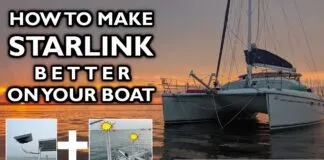
How To Make Starlink Better On Your Boat | Interview

Catalina 380: What You Should Know | Boat Review
- Privacy Policy
- Do Not Sell My Personal Information
- Online Account Activation
- Privacy Manager
Pearson 323
The pearson 323 is a 32.25ft masthead sloop designed by william shaw and built in fiberglass by pearson yachts between 1976 and 1983..
The Pearson 323 is a moderate weight sailboat which is slightly under powered. It is stable / stiff and has an excellent righting capability if capsized. It is best suited as a bluewater cruising boat. The fuel capacity is originally small. There is a short water supply range.
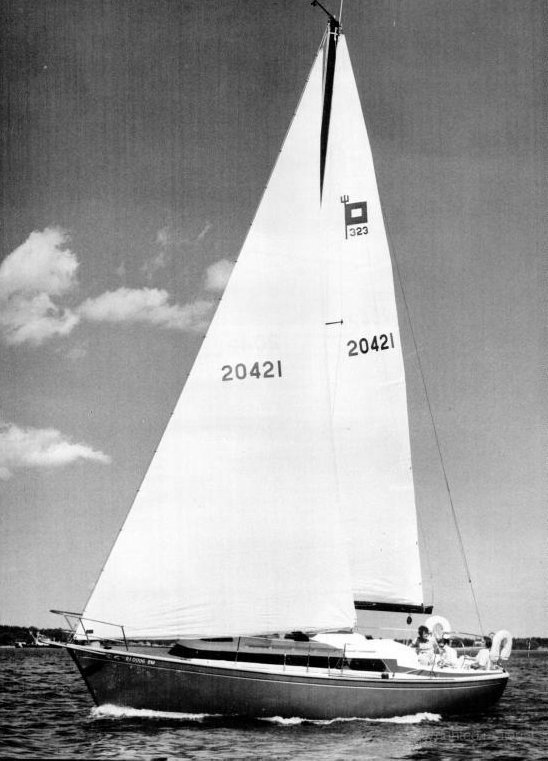
Pearson 323 for sale elsewhere on the web:

Main features
Login or register to personnalize this screen.
You will be able to pin external links of your choice.

See how Sailboatlab works in video

We help you build your own hydraulic steering system - Lecomble & Schmitt
Accommodations
Builder data, other photos.
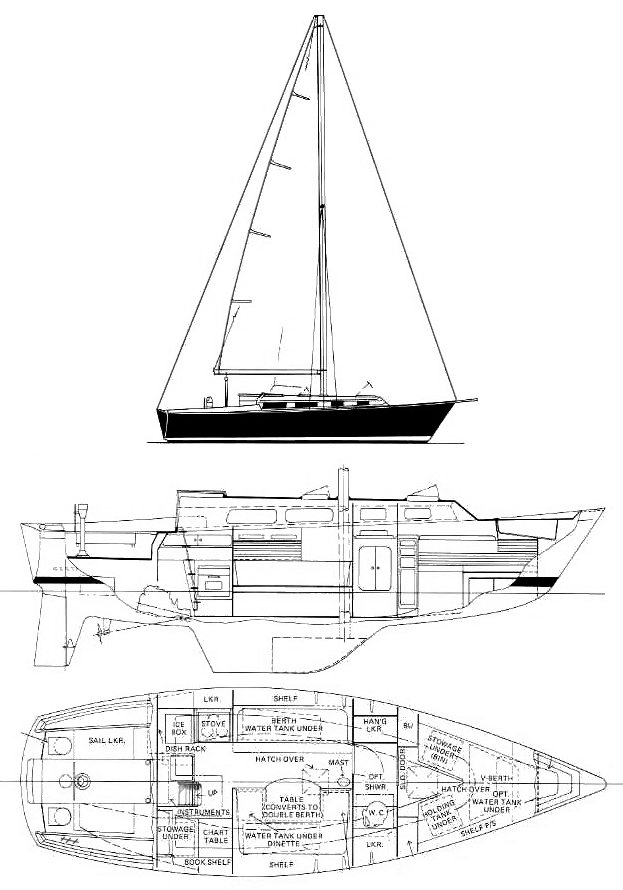
Modal Title
The content of your modal.
Personalize your sailboat data sheet

IMAGES
VIDEO
COMMENTS
A second PEARSON 31 (PEARSON 31-2), introduced in 1987, is an entirely different design (though also from William Shaw). Sailboat Forum. View All Topics: ... A Ballast/Displacement ratio of 40 or more translates into a stiffer, more powerful boat that will be better able to stand up to the wind. Bal./Disp = ballast (lbs)/ displacement (lbs)*100
The Pearson 31 was a fun boat to design. All boats are fun, but this one represented a real challenge. What I wanted was a contemporary hull rig that would race well under a variety of rules, be simple to handle and still provide her owners with most of the comforts associated with cruising. In short, an up-to-date dual purpose boat with a ...
The manual has a fair amount of detail for the 31-2 and there is a fair amount of cross over for other Pearson boats on the line at the end of production. The models include: P27, P28-2, P33-2, P34-2, P35-2, P36-2, P37-2, P39-2, P38. Pearson 31-2 Owners Manual. Pearson 31-2 Standard Equipment. Cal-Pearson 31.
The Pearson 31 is a 31.0ft fractional sloop designed by William Shaw and built in fiberglass by Pearson Yachts between 1977 and 1981. The Pearson 31 is a moderate weight sailboat which is a reasonably good performer. It is very stable / stiff and has a good righting capability if capsized. It is best suited as a coastal cruiser.
Our goal is to preserve and enhance information for those sailing and maintaining classic plastic Pearson boats. The site is regularly updated as new information is discovered. As many boat owners websites come and go on the internet, this site serves as a resilient portal for Pearson boat owners. It features a repository of enhanced original ...
The Pearson 31 2 is a 30.67ft masthead sloop designed by William Shaw/W. G. Richards and built in fiberglass by Pearson Yachts between 1987 and 1991. The Pearson 31 2 is a moderate weight sailboat which is a reasonably good performer. It is stable / stiff and has a good righting capability if capsized. It is best suited as a coastal cruiser.
Pearson 31 is a 31′ 0″ / 9.5 m monohull sailboat designed by William Shaw and built by Pearson Yachts between 1977 and 1981. ... The lower a boat's ratio is, the less power it takes to drive the boat to its nominal hull speed or beyond. Read more. Formula. D/L = (D ÷ 2240) ÷ (0.01 x LWL)³ D: Displacement of the boat in pounds ...
Pearson 31-2 is a 30′ 8″ / 9.4 m monohull sailboat designed by William Shaw and built by Pearson Yachts between 1987 and 1991. ... The lower a boat's ratio is, the less power it takes to drive the boat to its nominal hull speed or beyond. Read more. Formula. D/L = (D ÷ 2240) ÷ (0.01 x LWL)³ D: Displacement of the boat in pounds ...
Complete Sail Plan Data for the Pearson 31-2 Sail Data. Sailrite offers free rig and sail dimensions with featured products and canvas kits that fit the boat. ... Sailboat Data ; Pearson 31-2 Sail Data ; Pearson 31-2 Sail Data. Pinit. SKU: X-SD-5588 . Quantity discounts available . Quantity Price; Quantity -+ Add to Cart . Details. Details. LWL ...
Key to Sailboat Table. Model: Pearson model name and link to line drawing. Type: Boat and Rig Attributes. All types are Bermuda rigged sloop, single mast with fore-and-aft sails, unless otherwise specified by Cat, Ketch, or Yawl. LOA: Length Over All, the maximum length of the hull, in feet, from stem to stern measuring parallel to the waterline.
Sailboat data, rig dimensions and recommended sail areas for Pearson 31-2 sailboat. Tech info about rigging, halyards, sheets, mainsail covers and more. Sailboat Data directory for over 8,000 sailboat designs and manufacturers. Direct access to halyards lengths, recommended sail areas, mainsail cover styles, standing rigging fittings, and lots ...
If you are a boat enthusiast looking to get more information on specs, built, make, etc. of different boats, then here is a complete review of PEARSON 31-2. Built by Pearson Yachts and designed by William Shaw, the boat was first built in 1987. It has a hull type of Fin w/spade rudder and LOA is 9.35. Its sail area/displacement ratio 17.05.
That is what the extra 3 feet gains for you. It also gives you bigger sails to handle, and about 1,500 lbs more in displacement. Yes, a bigger boat will mean more $$$ for upkeep, docking, etc. There's also a question in my mind of why the 34 is only $15K more than the 31, which you do say is in better shape of the two.
1987 Pearson 31 Pearson. US$23,000. Knot 10 Yacht Sales | Barnegat, New Jersey. Request Info. <. 1. >. * Price displayed is based on today's currency conversion rate of the listed sales price. Boats Group does not guarantee the accuracy of conversion rates and rates may differ than those provided by financial institutions at the time of ...
Performance. The Pearson 32 is absolutely fun to sail. It's small enough to easily singlehand, yet large enough for a couple or young family to summer cruise. With a 208-square-foot mainsail set up with a simple slab-reefing system, and a roller-furling, 120-percent genoa, the 8- to 20-knot wind range is covered.
The second PEARSON 31, (here designated as PEARSON 31-2), and not to be confused with an earlier version(1977) also designed by William Shaw. A shoal draft, wing keel was also available. (draft: 3.9′; disp: 10200 lbs.) Re-introduced in 1996 during a short lived revival of the Pearson brand. (Cal-Pearson Corp.)
The PEARSON 32 is similar to the PEARSON 31 (1977), but with a different stern and a masthead rig. Sailboat Forum. View All Topics: ... Like the LWL, it will vary with the weights of fuel, water, stores and equipment. A boat's actual draft is usually somewhat more than the original designed or advertised draft. For boats with adjustable keels ...
1987 Pearson 31 Pearson. US$23,000. Knot 10 Yacht Sales | Barnegat, New Jersey. Request Info. <. 1. >. * Price displayed is based on today's currency conversion rate of the listed sales price. Boats Group does not guarantee the accuracy of conversion rates and rates may differ than those provided by financial institutions at the time of ...
The Pearson 323 is a 32.25ft masthead sloop designed by William Shaw and built in fiberglass by Pearson Yachts between 1976 and 1983. The Pearson 323 is a moderate weight sailboat which is slightly under powered. It is stable / stiff and has an excellent righting capability if capsized. It is best suited as a bluewater cruising boat.
40.40 ft / 12.31 m: J: 13.40 ft / 4.08 m: P: ... Thanks to Kris Kimmons for providing additional information and corrections. Dimensions from builder's brochure. Sailboat Forum. View All Topics: ... more powerful boat that will be better able to stand up to the wind. Bal./Disp = ballast (lbs)/ displacement (lbs)*100
549.31 ft² / 51.03 m² ... Designers: William Shaw: Builders: Pearson Yachts: Related Sailboats: PEARSON 34-2 : Download Boat Record: Notes. Keel/CB version also available: Draft BD: 7.6'/BU: 3.83' ... We use technologies like cookies to store and/or access device information. We do this to improve browsing experience and to show (non ...
From 1968-1982 the PEARSON 35 remained relatively unchanged and had the longest production run of any other Pearson model. Diesel power available as an option as was a yawl rig. Boats were delivered with a number of different engines including those from Farymann, Westerbeke, and Yanmar. Not the same as a much later PEARSON 35 (1997?) which is ...